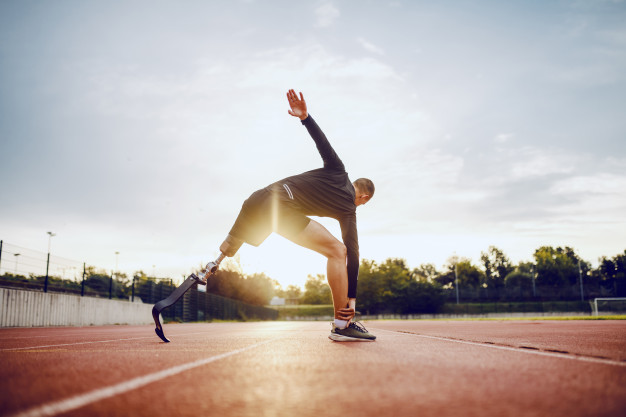Physical Activity has experienced a vast increase in marketing in the last few years, with several different initiatives and campaigns aimed to get different groups involved with organised and personal activities, such as children or groups with language barriers. The one group that has seen the most increase in specific courses and plans aimed at them is people with a disability. It is easy to see why it is not easy for this group to get involved with the standard exercise schemes offered, however, recently it has been clear that with a few tweaks anyone can get involved with a plan that suits them.
Studies:
In a study carried out by Motl and McAuley (2010) for the Physical Medicine and Rehabilitation Clinics Journal, they pointed out how the biggest encouragement for trainers at that time was to offer a more specified programme for both older adults and people with a disability as the demand for these was so high. This is because these are groups that are commonly ignored when talking about organised physical activity. It was also found that happiness levels measured in both trainers and clients were elevated after involvement in plans such as these.
In 2004, Rummer et al. pointed out several barriers which they believed stopped people with disabilities engaging in physical activity. One barrier was the lack of equipment designed to their specific needs. Another was the lack of information available to this group for how to plan exercise for them. The biggest barrier however appeared to be the perceptions and attitudes of other people and over 40% of people in this group claimed that this hindered them. The researchers have since reviewed this study and stated that in the last decade all of these barriers have largely diminished and the same group study feel more confident in engaging in any type of activity than they did at the time of the first study.
Van der Ploeg et al. (2004) pointed out that the most searched for area of exercise that year in Holland was exercise for people with a disability. As a result of this, they created the PAD model (Physical Activity for people with a Disability). This model has been used ever since and offers little adjustments that can be made to a vast array of exercise plans to cater them towards the needs of people with different disabilities. It also offers great awareness tips for all trainers to think about.
Conclusion:
We can clearly see that attitudes and efforts towards exercise for people with a disability have improved drastically over the last few years and we can hope that it gets even better in years to come. If this field is of interest to you and you would like to be more aware and learn how to get more involved, we are currently offering a Level 3 Award in Designing Exercise Programmes for Disabled Clients as well as the Level 3 Award in Designing Exercise Programmes for Older Adults.
Daniel
Team PTI
References:
Motl, R.W. and McAuley, E., (2010). Physical activity, disability, and quality of life in older adults. Physical Medicine and Rehabilitation Clinics, 21(2), pp.299-308.
Rimmer, J.H., Riley, B., Wang, E., Rauworth, A. and Jurkowski, J., (2004). Physical activity participation among persons with disabilities: barriers and facilitators. American journal of preventive medicine, 26(5), pp.419-425.
Van der Ploeg, H.P., Van der Beek, A.J., Van der Woude, L.H. and van Mechelen, W., (2004). Physical activity for people with a disability. Sports medicine, 34(10), pp.639-649.
Source: platinumtraininginstitute.com



